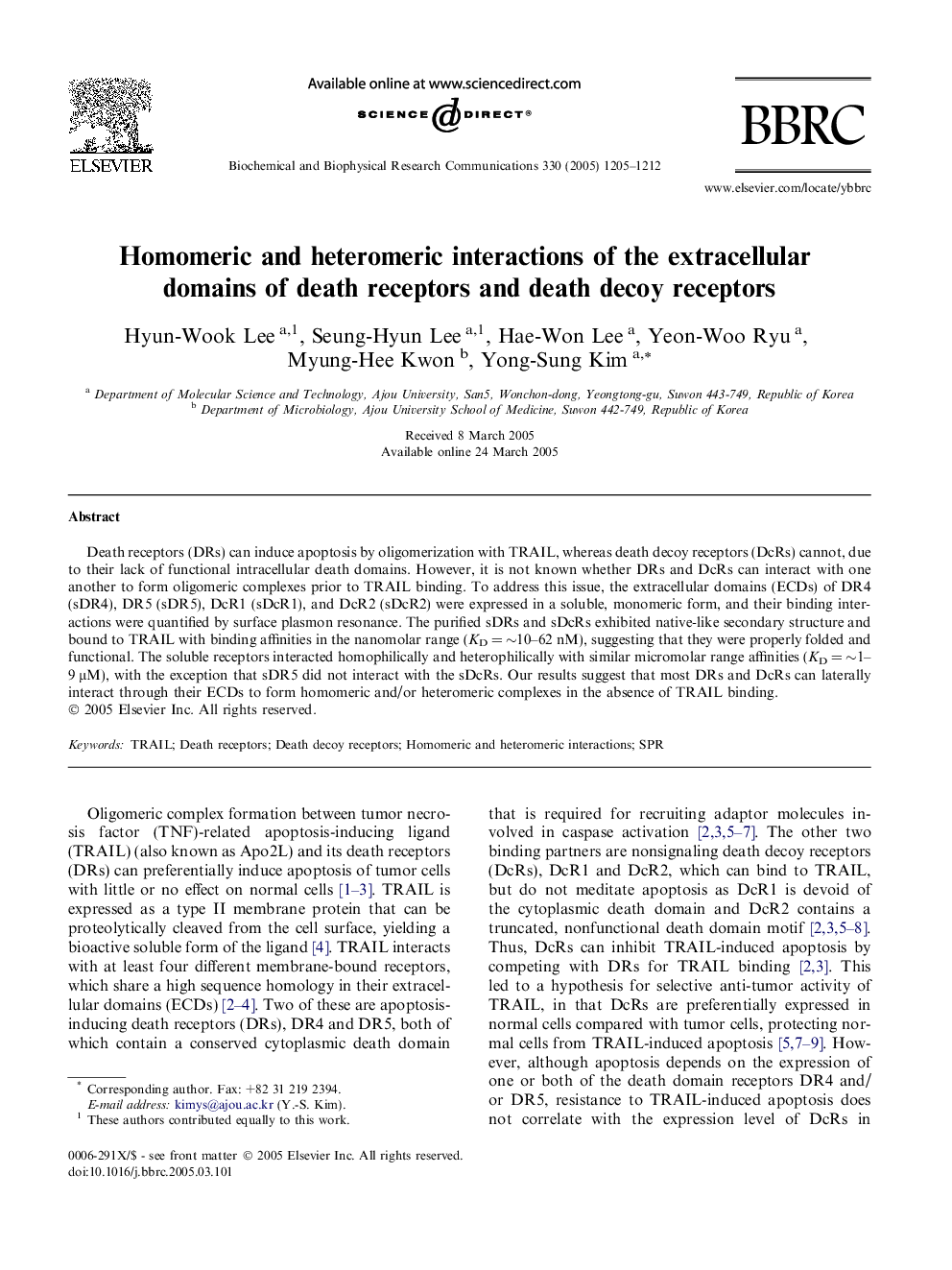| Article ID | Journal | Published Year | Pages | File Type |
|---|---|---|---|---|
| 9884445 | Biochemical and Biophysical Research Communications | 2005 | 8 Pages |
Abstract
Death receptors (DRs) can induce apoptosis by oligomerization with TRAIL, whereas death decoy receptors (DcRs) cannot, due to their lack of functional intracellular death domains. However, it is not known whether DRs and DcRs can interact with one another to form oligomeric complexes prior to TRAIL binding. To address this issue, the extracellular domains (ECDs) of DR4 (sDR4), DR5 (sDR5), DcR1 (sDcR1), and DcR2 (sDcR2) were expressed in a soluble, monomeric form, and their binding interactions were quantified by surface plasmon resonance. The purified sDRs and sDcRs exhibited native-like secondary structure and bound to TRAIL with binding affinities in the nanomolar range (KD = â¼10-62 nM), suggesting that they were properly folded and functional. The soluble receptors interacted homophilically and heterophilically with similar micromolar range affinities (KD = â¼1-9 μM), with the exception that sDR5 did not interact with the sDcRs. Our results suggest that most DRs and DcRs can laterally interact through their ECDs to form homomeric and/or heteromeric complexes in the absence of TRAIL binding.
Keywords
Related Topics
Life Sciences
Biochemistry, Genetics and Molecular Biology
Biochemistry
Authors
Hyun-Wook Lee, Seung-Hyun Lee, Hae-Won Lee, Yeon-Woo Ryu, Myung-Hee Kwon, Yong-Sung Kim,
